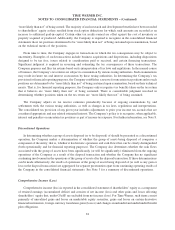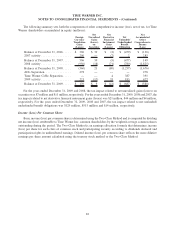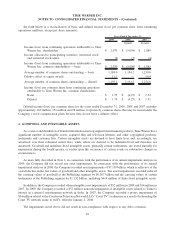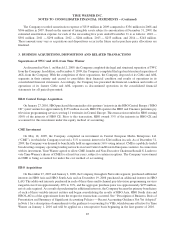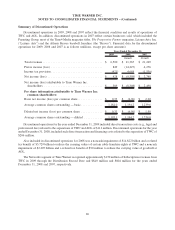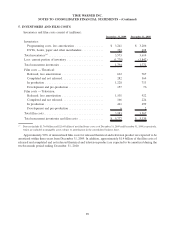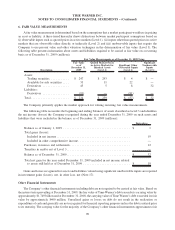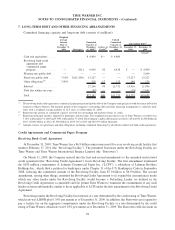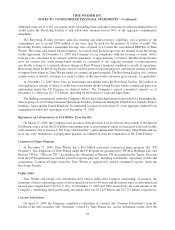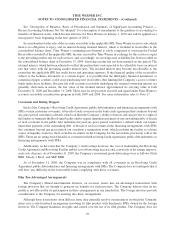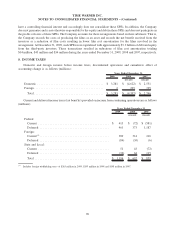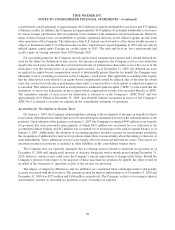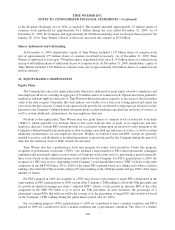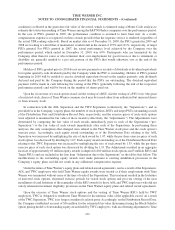Time Magazine 2009 Annual Report Download - page 103
Download and view the complete annual report
Please find page 103 of the 2009 Time Magazine annual report below. You can navigate through the pages in the report by either clicking on the pages listed below, or by using the keyword search tool below to find specific information within the annual report.value due to the short-term nature of such instruments. For the remainder of the Company’s other financial
instruments, differences between the carrying value and fair value are not significant at December 31, 2009. The fair
value of financial instruments is generally determined by reference to the market value of the instrument as quoted
on a national securities exchange or in an over-the-counter market. In cases where quoted market value is not
available, fair value is based on an estimate using present value or other valuation techniques.
Non-Financial Instruments
The majority of the Company’s non-financial instruments, which include goodwill, intangible assets,
inventories and property, plant and equipment, are not required to be carried at fair value on a recurring basis.
However, if certain triggering events occur (or at least annually for goodwill and indefinite-lived intangible assets)
such that a non-financial instrument is required to be evaluated for impairment, a resulting asset impairment would
require that the non-financial instrument be recorded at the lower of cost or its fair value.
In the case of film production costs, upon the occurrence of an event or change in circumstance that may
indicate that the fair value of a film is less than its unamortized costs, the Company determines the fair value of the
film and writes off to the consolidated statement of operations the amount by which the unamortized capitalized
costs exceed the film’s fair value. Some of these events or changes in circumstance include: (i) an adverse change in
the expected performance of a film prior to its release, (ii) actual costs substantially in excess of budgeted costs,
(iii) substantial delays in completion or release schedules, (iv) changes in release plans, (v) insufficient funding or
resources to complete the film and to market it effectively and (vi) the failure of actual performance subsequent to
release to meet that which had been expected prior to release. In determining the fair value of its films, the Company
employs a discounted cash flow methodology with assumptions for cash flows for periods not exceeding 10 years.
The discount rate utilized in the discounted cash flow analysis is based on the weighted average cost of capital of the
respective business (e.g., Warner Bros.) plus a risk premium representing the risk associated with producing a
particular film. The fair value of any film costs associated with a film that management plans to abandon is zero. As
the primary determination of fair value is determined using a discounted cash flow model, the resulting fair value is
considered a Level 3 input. During the year ended December 31, 2009, certain film production costs, which were
recorded as inventory in the consolidated balance sheet, were written down to $271 million from their carrying
values of $431 million.
91
TIME WARNER INC.
NOTES TO CONSOLIDATED FINANCIAL STATEMENTS – (Continued)


